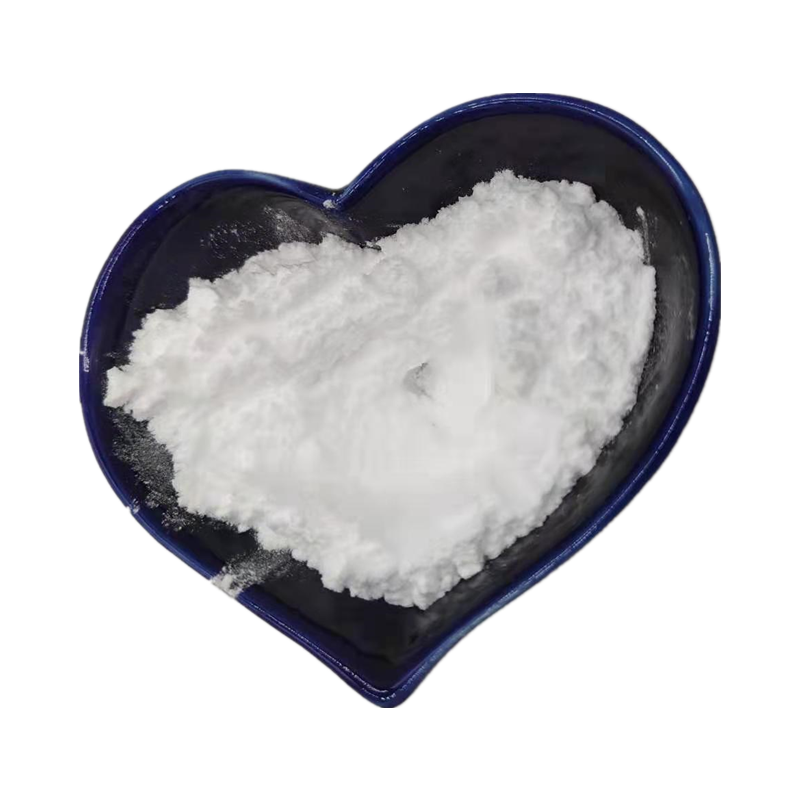Product Description
Fludarabine CAS 21679-14-1
-
21679-14-1
-
-
Entrepreneur
-
White powder
-
98% Min

Product Name: Fludarabine
Cas No.: 21679-14-1
Molecular Formula: C10H12FN5O4
Molecular Weight: 285.23
Appearance: White Powder
Density: 2.17
Purity: 98% Min
Solubility: Soluble in DMF, DMSO, methanol or ethanol. Sparingly soluble in water
Boiling point: 747.3±70.0 ℃ at 760 mmHg
Melting point: 265-268 oC
Flash point: 405.8±35.7 ℃
Vapour: 0.0±2.6 mmHg at 25°C
Refractive index: 1.876
SMILES: NC1=C2C(N(C=N2)C3OC(CO)C(O)C3O)=NC(F)=N1
InChI Key: InChIKey=HBUBKKRHXORPQB-UHFFFAOYSA-N
Other Names: F-Ara-A / Fludarabinum / NSC 118218
Description:
Fludarabine (NSC 118218), with the chemical name 9H-Purin-6-amine, F-Ara-A Fludarabinum, monosodium salt, and CAS number 21679-14-1, is a synthetic purine nucleoside analog that has gained prominence as an antineoplastic and immunosuppressive agent. It is a vital component in the field of oncology and hematology, used primarily for the treatment of various hematologic malignancies, particularly chronic lymphocytic leukemia (CLL). Fludarabine exerts its therapeutic effects by interfering with DNA synthesis and repair processes, disrupting cell division, and inducing apoptosis in rapidly dividing cells. This compound's unique mechanism of action and clinical significance make it an essential tool in the arsenal of treatments for certain hematological disorders.
Features:
1. Purine Nucleoside Analog: Fludarabine is a synthetic analog of the purine nucleoside adenosine. This structural resemblance allows it to be incorporated into DNA and RNA during replication and transcription, disrupting normal cellular processes.
2. Selective Action: Fludarabine is more readily taken up by malignant cells, particularly lymphocytes, compared to normal cells. This selective uptake contributes to its effectiveness against certain hematologic cancers like chronic lymphocytic leukemia (CLL).
3. Immunosuppressive Properties: Besides its antineoplastic effects, fludarabine also exhibits immunosuppressive properties. This makes it valuable for conditions like CLL, where excessive immune activity contributes to disease progression.
4. Inhibition of DNA Repair: Fludarabine interferes with DNA repair enzymes, leading to accumulation of DNA strand breaks and impairing DNA synthesis. This mechanism contributes to its cytotoxic effects on rapidly dividing cancer cells.
5. Resistance Minimization: Fludarabine's structural modification from the naturally occurring nucleoside reduces susceptibility to degradation by adenosine deaminase, an enzyme that can impact the effectiveness of other nucleoside analogs.
6. Route of Administration: Fludarabine is typically administered intravenously, allowing for controlled dosing and efficient delivery to target cells.
7. Combination Therapy: Fludarabine is often used in combination with other chemotherapeutic agents or monoclonal antibodies to enhance treatment efficacy in hematologic malignancies.
8. Dose Adjustment: Fludarabine dosages may need to be adjusted based on factors such as renal function and patient tolerance to minimize potential side effects.
9. Clinical Versatility: Beyond CLL, fludarabine has demonstrated effectiveness in treating other hematologic disorders like acute myeloid leukemia and non-Hodgkin lymphomas.
10. Adverse Effects: Common side effects of fludarabine therapy include myelosuppression, immunosuppression, and potential risk of opportunistic infections.
Applications:
1. Chronic Lymphocytic Leukemia (CLL)
Fludarabine is widely used as a first-line or second-line treatment for CLL, a type of leukemia characterized by the abnormal accumulation of mature lymphocytes. It has shown significant response rates and can help manage the disease, especially in patients who have not responded well to other treatments.
2. Acute Myeloid Leukemia (AML)
Fludarabine, often in combination with other chemotherapy agents, is used to treat AML, a rapidly progressing cancer that affects myeloid cells in the bone marrow and blood.
3. Non-Hodgkin Lymphomas (NHL)
Fludarabine is incorporated into chemotherapy regimens for certain types of NHL, including indolent and mantle cell lymphomas, to enhance treatment outcomes.
4. Hairy Cell Leukemia
Fludarabine has demonstrated effectiveness in treating hairy cell leukemia, a rare form of chronic leukemia affecting B cells.
5. Stem Cell Transplantation
Fludarabine is often used as part of conditioning regimens before allogeneic hematopoietic stem cell transplantation (HSCT) in patients with hematologic malignancies. The aim is to suppress the patient's immune system and create a favorable environment for successful transplantation.
6. Investigational Therapies
Fludarabine is sometimes explored in clinical trials for other hematologic disorders and malignancies, as well as in combination therapies with newer targeted agents.
Storage: Keep in dark place, sealed in dry, room temperature.
Package: 25kg/bag or as per your particular request.